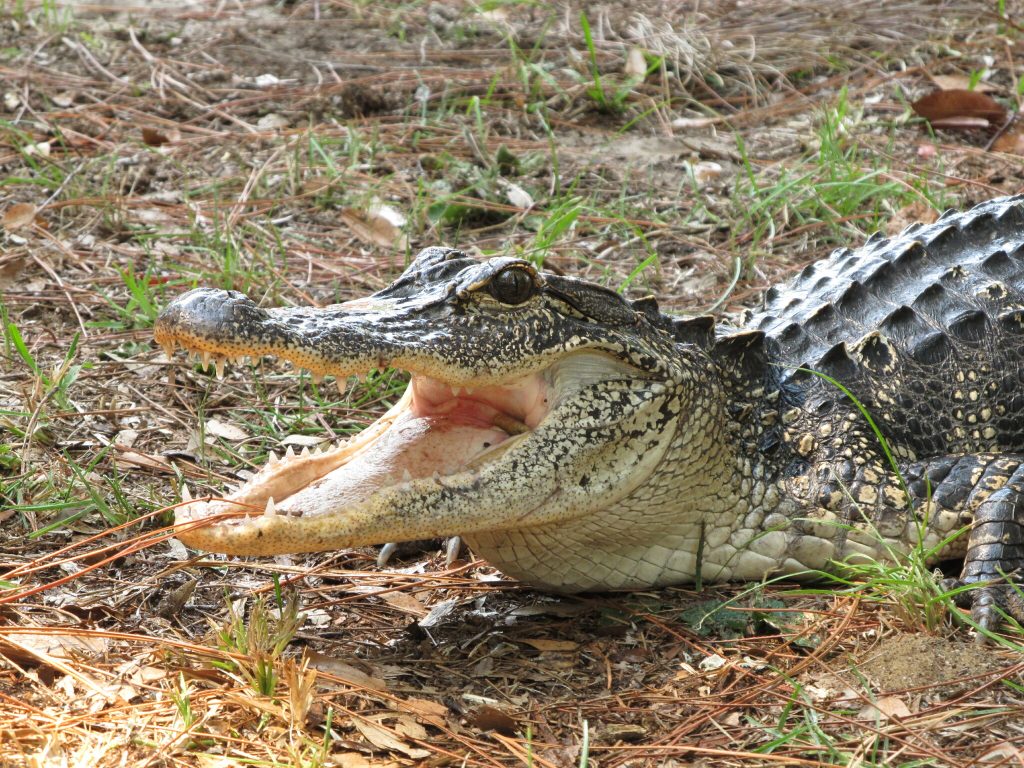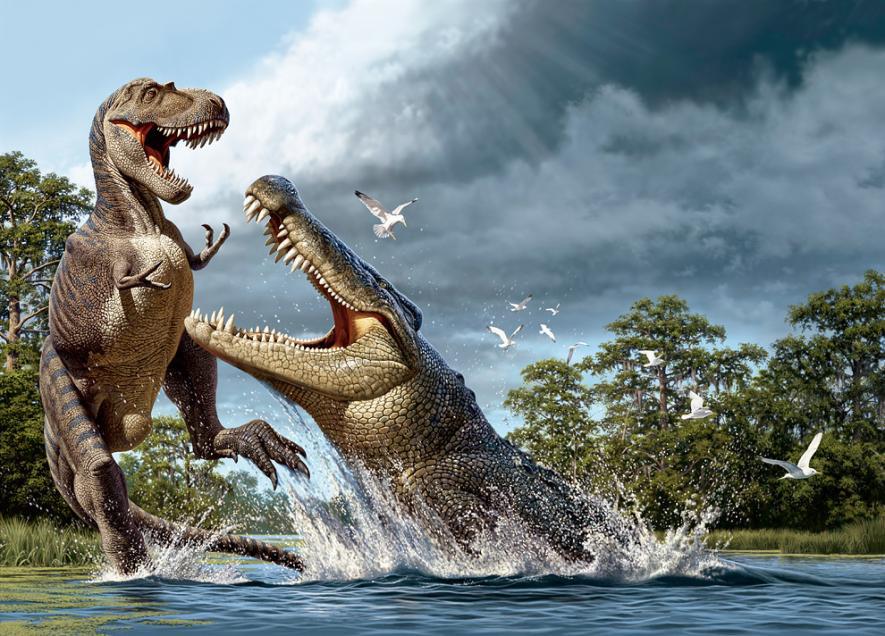SECU Daily Planet Theater: Nature Research Center Floors 1-3
11am — Crocodilians of the World!
Dr. Bryan L. Stuart, Research Curator, Herpetology, North Carolina Museum of Natural Sciences
Our Curator of Herpetology will provide an overview of the diversity of the world’s crocodilians.
Ages 8 and up

12:30pm — Amazing Alligators
Greg Skupien, Curator, Naturalist Center, North Carolina Museum of Natural Sciences
Learn about North Carolina’s only native crocodilian. See what it takes to catch, study, and coexist with these amazing reptiles.
All ages
 Illustration: Raúl Martin.
Illustration: Raúl Martin.
1:30pm —Colossal Crocodilians from Prehistory to the Present
Dr. Christian Kammerer, Research Curator, Paleontology, North Carolina Museum of Natural Sciences
Crocodilians include the largest living reptiles, but some of their prehistoric relatives were truly gigantic. This talk will present an introduction to prehistoric crocodiles, highlighting exceptional species from the Age of Dinosaurs and the re-evolution of large body size during extreme climates in the Age of Mammals.
Ages 8 and up
3pm —Snake Feeding
Rachel Myers, Curator of Reptiles and Amphibians, North Carolina Museum of Natural Sciences
Watch a live snake eat and learn about the different strategies snakes use to capture and consume their prey!
All ages
4pm —Getting Edu-Gatored in North Carolina
Alicia D. Wassmer, Alligator Biologist, North Carolina Wildlife Resources Commission
In North Carolina, American alligators grow much slower and occur in lower densities than most populations of this species at warmer, lower latitudes. Learn about some of the challenges facing alligators here at the northern extent of their range, as well as what state wildlife agency biologists are doing to learn more about the one and only Carolina crocodilian.
Ages 8 and up

